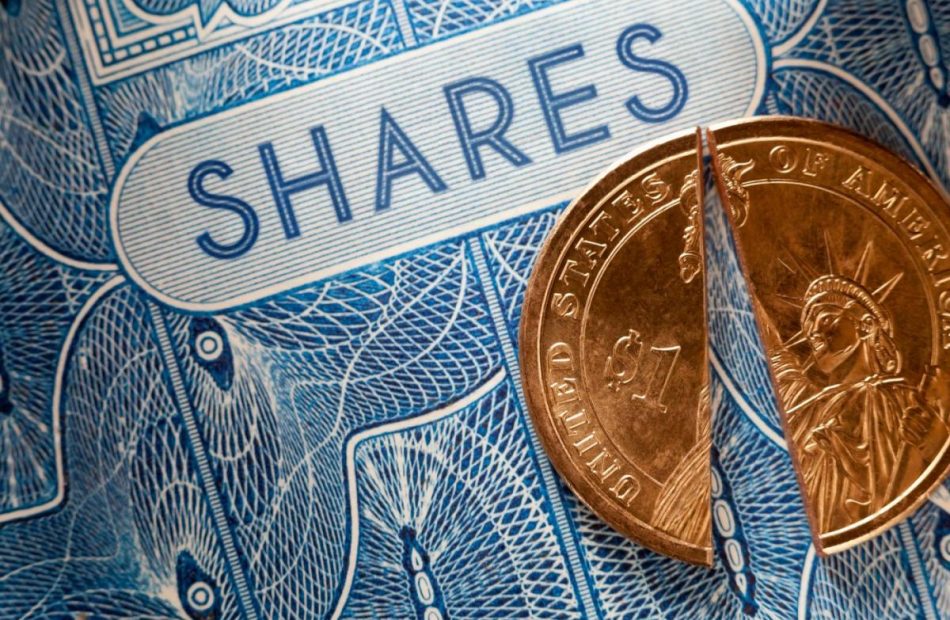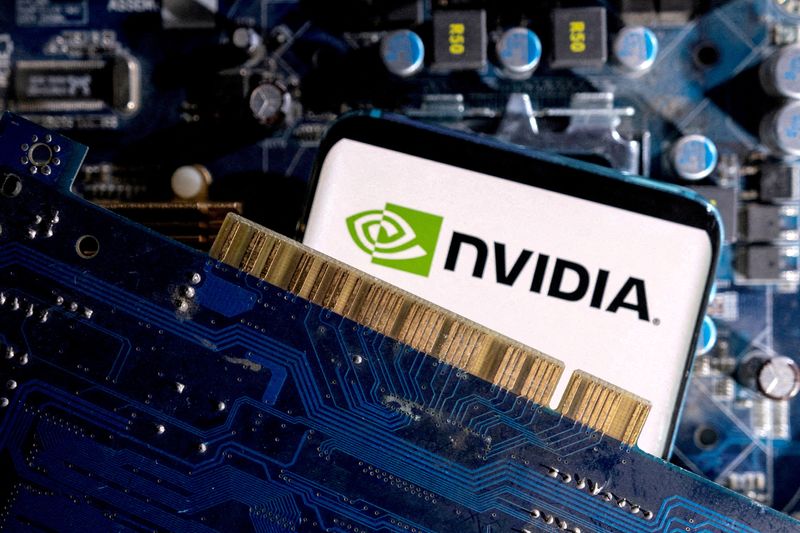Meet Wall Street's Safest Dividend Stock: A Small-Cap Company Few Investors Know Exists
Over the last century, Wall Street has sat on a pedestal above all other asset classes. While Treasury bonds, housing, and commodities like gold, silver, and oil, have had their moments in the sun and, in many instances, made investors richer, no asset class has come close to matching the average annual return from stocks over the last century.
One of the best aspects of putting your money to work on Wall Street is there are thousands of publicly traded companies and exchange-traded funds (ETFs) to choose from. It’s a near-certainty that there’s a security or 10 that matches your risk tolerance and/or investment goals
But among the seemingly countless ways money can be made in the stock market, few strategies have been more consistently successful than buying and holding high-quality dividend stocks over an extended period.
Last year, the investment advisors at Hartford Funds released a lengthy report extoling the virtues, and outperformance, of dividend stocks. In particular, The Power of Dividends: Past, Present, and Future compared the performance of dividend-paying stocks to non-payers over the previous half-century.
According to the report, dividend stocks averaged a 9.17% annual return between 1973 and 2023, and did so while being 6% less volatile than the benchmark S&P 500. Meanwhile, public companies that didn’t offer a payout trudged their way to a less-impressive annualized return of 4.27% over the same 50-year stretch, and were, on average, 18% more volatile than the S&P 500.
Companies that regularly share a percentage of their profits with investors — even if these payouts aren’t necessarily growing on an annual basis — tend to be recurringly profitable, time-tested, and are usually able to provide transparent long-term growth outlooks. In short, they’re just the type of businesses we’d expect to increase in value over time.
Wall Street has no shortage of amazing dividend stocks to choose from
Although well over 1,000 stocks currently pay a dividend to their shareholders, no two income stocks are alike. When it comes to consistency and safety, some dividend stocks naturally rise to the top.
A good example is consumer staples colossus Coca-Cola (NYSE: KO). In February, it increased its quarterly dividend for the 62nd consecutive year. Furthermore, the company has paid a continuous dividend, without interruption, since 1920.
Coca-Cola’s secret to success really isn’t a secret at all. It provides a basic necessity (beverages) that’ll be purchased in any economic climate, and is geographically diverse, with operations ongoing in all but three countries (North Korea, Cuba, and Russia).
Coca-Cola also possesses a powerful brand that resonates with shoppers. Kantar’s annual “Brand Footprint” report has labeled Coca-Cola the most-chosen brand from retail shelves for 12 consecutive years.
Healthcare conglomerate Johnson & Johnson (NYSE: JNJ) is another prime example of a top-tier dividend stock that delivers safe, predictable income year after year. In April, J&J’s board matched Coca-Cola by increasing its base annual payout for a 62nd consecutive year.
Regardless of what’s happening with the U.S./global economy or stock market, people still develop ailments and require medical care. This means demand for novel therapeutics and medical devices are going to be consistent, which leads to transparent and predictable operating cash flow.
Johnson & Johnson is also one of only two publicly traded companies that still possesses the highly coveted AAA credit rating from Standard & Poor’s (S&P), a division of S&P Global. This rating, which is one notch higher on the belt than that of the U.S. government, signifies S&P’s utmost faith in J&J servicing and repaying its outstanding debts.
But at the end of the day, neither Coca-Cola, Johnson & Johnson, nor the 1,000-plus other dividend stocks out there can hold a candle, in terms of safety and consistency on the dividend front, to one off-the-radar small-cap stock that few investors know exists.
Say hello to Wall Street’s greatest (and most underappreciated) dividend stock
The mystery stock that can arguably be described as the safest and most-consistent dividend payer is York Water (NASDAQ: YORW), a $548 million market cap water and wastewater utility company that services 56 municipalities spanning four counties in South-Central Pennsylvania.
To say York flies under the radar would be an understatement. Over the last three months, its average daily trading volume is a paltry 58,329 shares. On a given day, a little over $2 million worth of the company’s shares trade hands. But this inconspicuous water utility has quite the rich history of sharing a percentage of its profits with its investors.
Since York Water’s founding in 1816, the company has paid a continuous dividend to its shareholders. Although the company doesn’t increase its payout in consecutive years like Coca-Cola and Johnson & Johnson, its 208-year continuous streak of dividends precisely doubles Coke’s 104-year streak. Based on the research I’ve done, York’s continuous dividend streak is 60 years longer than the next-closest continuous payout streak from a public company in the U.S., Stanley Black & Decker.
The safety of York’s payout can be traced to four factors.
To start with, water and wastewater service are basic necessities. Regardless of whether you own or rent, you’re going to need these services. Further, demand for water and wastewater service doesn’t change much from one year to next, leading to highly predictable operating cash flow.
Secondly, the barrier to entry among utilities is usually sky-high. Most utilities operate as monopolies or duopolies in the regions they service, meaning consumers rarely, if ever, have an opportunity to choose which company provides their service. With initial infrastructure costs often restrictive, York Water doesn’t have to worry about competition for its customers. Once again, this leads to transparent and predictable cash flow.
The third important element to York’s success is that it’s a regulated water utility. “Regulated” utilities must first obtain approval from a state’s public utility commission (in this instance, the Pennsylvania Public Utility Commission, or PPUC) to increase rates on customers. While this might sound inconvenient, it ensures that York doesn’t have to contend with unpredictable wholesale pricing for its services.
In January 2023, the PPUC gave York the thumbs-up to increase rates on approximately 75,000 of its customers to offset $176 million in various system improvements and infrastructure replacements. York’s annual revenue jumped 18% last year in the wake of this increase.
Lastly, York Water hasn’t been shy about making acquisitions to expand its reach. A steady diet of earnings-accretive bolt-on acquisitions ensures that York can maintain its continuous dividend streak.
Though some investors are liable to be critical of York yielding “only” 2.2%, keep in mind that yield is a function of share price. Despite its quarterly payout growing by 164% since the century began, York’s shares have risen by 573% during the same stretch. In other words, the only reason York’s yield is a modest 2.2% is because its share price has significantly risen over time. That’s not something for shareholders to complain about.
While you can find plenty of dividend stocks with higher yields than York Water, you’re not going to find a company with a steadier or safer payout track record.
Should you invest $1,000 in York Water right now?
Before you buy stock in York Water, consider this:
The Motley Fool Stock Advisor analyst team just identified what they believe are the 10 best stocks for investors to buy now… and York Water wasn’t one of them. The 10 stocks that made the cut could produce monster returns in the coming years.
Consider when Nvidia made this list on April 15, 2005… if you invested $1,000 at the time of our recommendation, you’d have $792,725!*
Stock Advisor provides investors with an easy-to-follow blueprint for success, including guidance on building a portfolio, regular updates from analysts, and two new stock picks each month. The Stock Advisor service has more than quadrupled the return of S&P 500 since 2002*.
*Stock Advisor returns as of August 26, 2024
Sean Williams has no position in any of the stocks mentioned. The Motley Fool has positions in and recommends S&P Global. The Motley Fool recommends Johnson & Johnson. The Motley Fool has a disclosure policy.
Meet Wall Street’s Safest Dividend Stock: A Small-Cap Company Few Investors Know Exists was originally published by The Motley Fool
Prediction: Nvidia Will Crush Wall Street Expectations on Aug. 28 — but There's a Catch for the AI Stock
Nvidia (NASDAQ: NVDA) has been 2024’s most influential stock. Rising artificial intelligence (AI) demand spurred enormous sales and earnings growth for the company, and the business momentum translated to incredible valuation gains.
The processing leader’s share price is up 161% across this year’s trading alone, and its incredible performance has been a bullish catalyst for the market at large and other individual players in the AI space. Now, Nvidia stock is on the verge of its next big test.
After the market closes on Wednesday, Aug. 28, the company will publish results for the second quarter of its 2025 fiscal year (which ended July 28). Management will also host a conference call to give investors further insight into the business and its outlook.
The earnings release will likely be one of this year’s most important stock market events, and anticipation on Wall Street is running high. There’s plenty of speculation on whether Nvidia will beat earnings expectations, and I’m predicting that the AI giant will comfortably beat most targets. But buckle up, because this one could get wild.
Nvidia looks poised to crush sales and earnings targets
In its fiscal 2025 first quarter update, Nvidia management guided for roughly $28 billion in sales in the second quarter. If the company hits that target, it would mean delivering annual sales growth of 107%. Management also expects Nvidia’s gross margin to grow to 74.8%. Those numbers are nothing to sneeze at.
Wall Street is even more optimistic, with the average analyst estimate calling for the AI frontrunner to deliver sales of $28.6 billion in the period. Thus far, the company has been building an impressive streak of performance beats. Take a look at the table below, which tracks Nvidia’s revenue against Wall Street’s expectations over the company’s last four reported quarters.
|
Fiscal Quarter |
Wall Street Consensus Revenue Target |
Actual Revenue |
Percentage Beat |
|---|---|---|---|
|
Q2 2024 |
$11.22 billion |
$13.51 billion |
20.4% |
|
Q3 2024 |
$16.18 billion |
$18.12 billion |
12% |
|
Q4 2024 |
$20.62 billion |
$22.1 billion |
7.2% |
|
Q1 2025 |
$24.65 billion |
$26.04 billion |
5.6% |
Data sources: Nvidia and CNBC.
With the company posting fantastic margins, sales beats have also meant that the company’s earnings have crushed Wall Street’s expectations. Across the last year, the company’s quarterly non-GAAP (adjusted) earnings beat the midpoint Wall Street target by an average of 17.3%.
Tech industry capex is flashing signals
There’s a very good chance that Nvidia will manage to beat its own targets and the average Wall Street estimates with its upcoming quarterly report. Here’s why.
With its last quarterly report, Microsoft announced capital expenditures (capex) of $19 billion — with nearly all of the spending going to improving the company’s cloud and AI infrastructure. Capex was up 35% from the previous quarter, and management also announced that spending is poised to continue climbing over the next year. Microsoft is widely believed to be Nvidia’s largest customer, and increased spending on AI infrastructure is a clear bullish indicator.
The software giant wasn’t the only one to deliver encouraging capex news recently. Meta Platforms, another big Nvidia customer, also raised its capital-spending guidance range with the second-quarter results it published at the end of last month.
In general, the sentiment among many leading tech companies appears to be that it’s better to invest heavily in artificial intelligence right now than to risk being left behind or playing catch-up with competitors. Along with promising capex data from technology giants, that bodes well for Nvidia — and I think the company will beat top- and bottom-line expectations in Q2.
But there’s a catch.
Nvidia stock needs more than strong Q2 results for a post-earnings surge
While the average Wall Street target calls for Nvidia to report revenue of $28.6 billion for the second quarter, some analysts have set the target significantly higher. For example, HSBC expects the business to report $30 billion in revenue for the period.
Beating the average Wall Street target is often enough to trigger bullish valuation momentum for a company, but that isn’t always the case. Hot stocks in particular are often held to higher standards — with investors looking for the business to deliver results that match or exceed elevated expectations. It’s also worth noting that Wall Street analysts have gotten more accurate in modeling the company’s performance over the last year of reporting, with Nvidia’s quarterly sales beat going from 20.4% in last year’s second quarter to 5.6% in this year’s first quarter.
Even if Nvidia manages to far exceed the average Wall Street targets, there are other catalysts that could lead to volatile trading after earnings. Investors will also have the company’s guidance for the current quarter and future roadmap under the microscope, and reports have emerged that the AI leader may be delaying the release of its next-generation Blackwell processors. Depending on what Blackwell news Nvidia has to share, the stock could see big moves in either direction.
So even with signs that the AI luminary will deliver strong Q2 results, investors should understand the stage could be set for post-earnings valuation volatility. Rather than trying to time short-term buying and selling moves around what the company’s share price will do soon after earnings, it makes more sense to approach an investment in Nvidia with the company’s long-term outlook in mind. Things generally continue to look quite promising on that front.
Should you invest $1,000 in Nvidia right now?
Before you buy stock in Nvidia, consider this:
The Motley Fool Stock Advisor analyst team just identified what they believe are the 10 best stocks for investors to buy now… and Nvidia wasn’t one of them. The 10 stocks that made the cut could produce monster returns in the coming years.
Consider when Nvidia made this list on April 15, 2005… if you invested $1,000 at the time of our recommendation, you’d have $792,725!*
Stock Advisor provides investors with an easy-to-follow blueprint for success, including guidance on building a portfolio, regular updates from analysts, and two new stock picks each month. The Stock Advisor service has more than quadrupled the return of S&P 500 since 2002*.
*Stock Advisor returns as of August 26, 2024
HSBC Holdings is an advertising partner of The Ascent, a Motley Fool company. Randi Zuckerberg, a former director of market development and spokeswoman for Facebook and sister to Meta Platforms CEO Mark Zuckerberg, is a member of The Motley Fool’s board of directors. Keith Noonan has no position in any of the stocks mentioned. The Motley Fool has positions in and recommends Meta Platforms, Microsoft, and Nvidia. The Motley Fool recommends HSBC Holdings and recommends the following options: long January 2026 $395 calls on Microsoft and short January 2026 $405 calls on Microsoft. The Motley Fool has a disclosure policy.
Prediction: Nvidia Will Crush Wall Street Expectations on Aug. 28 — but There’s a Catch for the AI Stock was originally published by The Motley Fool
Move Over, Nvidia and Broadcom: Wall Street's Next Stock-Split Stock — a 120,000% Gainer Since Its IPO — Is Ready to Take Center Stage
Although artificial intelligence (AI) has been the talk of Wall Street since 2023 began, the return of stock-split euphoria has given AI a run for its money in 2024.
A stock split is a mechanism publicly traded companies can lean on to cosmetically alter their share price and outstanding share count. Its superficial in the sense that adjusting share price and share count by the same magnitude has no impact on market cap or a company’s underlying operating performance.
Splits come in two forms, with one being substantially more popular than the other. Reverse-stock splits are geared toward increasing a company’s share price. This is usually done to ensure it meets the continued minimum listing standards of a major stock exchange.
On the other hand, forward-stock splits reduce a company’s share price. The purpose of a forward split is to make shares more nominally affordable for investors who lack access to fractional-share purchases through their broker. Since forward splits are almost always announced from a position of operating strength, this is the type of split investors gravitate to.
Since 2024 began, 13 time-tested businesses have announced or completed a stock split — all but one of which is of the forward-split variety. While no splits have garnered more attention than AI darlings Nvidia (NASDAQ: NVDA) and Broadcom (NASDAQ: AVGO), there’s another scorching-hot stock-split stock readying for its moment in the spotlight.
According to the analysts at PwC, artificial intelligence is forecast to add $15.7 trillion to the global economy by 2030 through various consumption-side benefits and productivity improvements. With an addressable market this large, it’s not surprising to see Wall Street fall head over heels for AI stocks.
Nvidia has been the runaway face of the AI revolution. Since the start of 2023, Nvidia’s market cap has increased by $2.8 trillion, which is the fastest ascent we’ve ever witnessed from a market-leading business. This was the catalyst that compelled Nvidia’s board to approve a 10-for-1 forward split.
Nvidia’s astronomical gains are a function of its H100 graphics processing units (GPUs) being the undisputed top choice in AI-accelerated data centers. The analysts at semiconductor firm TechInsights note that Nvidia’s GPUs accounted for all but 90,000 of the 3.85 million GPUs shipped in 2023 to data centers.
With overwhelming demand comes the exceptional pricing power that’s sent the company’s adjusted gross margin considerably higher. Nvidia’s H100 sports a price tag ranging from $30,000 to $40,000, which is well above what its competitors are charging for their AI-GPUs.
Don’t overlook Nvidia’s CUDA platform, either. This software kit that helps developers build large language models is working hand-in-hand with the company’s hardware to keep customers within its ecosystem of products and services.
Meanwhile, Broadcom has been a key supplier of networking solutions. Last year, it introduced its Jericho3-AI fabric, which can connect up to 32,000 GPUs in high-compute data centers. The goal of Broadcom’s solutions is to reduce tail latency and maximize the computing potential of GPUs in use.
Although Broadcom’s stock has moved up in a big way because of its AI networking solutions — this sizable move led to its first-ever stock split, 10-for-1, following the close of trading on July 12 — there’s a lot more to this company than just solutions tied to artificial intelligence.
For example, Broadcom is a leader in developing wireless chips and solutions for next-generation smartphones. Telecom companies upgrading their wireless networks to support 5G download speeds have increased demand for the chips and accessories used in next-gen wireless devices.
While Nvidia and Broadcom have had their moment in the sun, another perennial outperformer, which has nothing to do with AI and has gained more than 120,000%, including dividends paid, since its initial public offering (IPO), is ready to step forward and become Wall Street’s newest stock-split stock.
This 120,000%-gainer is two weeks away from becoming Wall Street’s newest stock-split stock
Following the close of trading on September 11, corporate uniform and business services provider Cintas (NASDAQ: CTAS) will complete a 4-for-1 forward split and join the ranks of an elite group of outperforming stock-split stocks in 2024.
This marks the sixth time Cintas will have conducted a forward split since its IPO in August 1983:
-
April 1987: 2-for-1
-
April 1991: 3-for-2
-
April 1992: 2-for-1
-
November 1997: 2-for-1
-
March 2000: 3-for-2
-
September 2024: 4-for-1
How does a company that supplies corporate uniforms, floor mats, towels, and safety kits outperform Wall Street’s benchmark indexes so decisively over a four-decade stretch? History and revenue diversity are the first important puzzle pieces.
Based on the company’s own admission in June, it has “more than 1 million businesses of all types and sizes” that it services. With no single customer accounting for an outsized percentage of sales, Cintas doesn’t have to worry about its proverbial ship sinking because of the struggles of one or more of its customers.
Additionally, Cintas has history on its side. Although recessions are a perfectly normal aspect of the economic cycle, they’re almost always short-lived. Periods of economic growth stick around significantly longer, thusly allowing Cintas’s customers to expand. In turn, this increases demand for corporate uniforms and business services over time.
Another key to the company’s long-term success has been its willingness to grow via acquisition. Since this century began, it’s scooped up Omni Services (2002), Zee Medical (2015), and G&K Services (2017), to name a few. These earnings-accretive deals expand the company’s product portfolio and work to keep existing clients within its network of products and services.
Don’t overlook innovation, either. Cintas has introduced new products to lure in new clients, and leaned on a variety of cross-selling solutions to encourage existing clients to spend more.
The cherry on top is the company’s incredible capital-return program. It’s raised its dividend every year since going public in 1983 and recently added to its share repurchase program, which stood at $1.5 billion, as of July 23, 2024. A company that can raise its payout for four decades without interruption is a business that’s demonstrated it can navigate anything the U.S. economy throws its way.
The one downside with Cintas is its valuation. Though being an industry leader has its perks and comes with some degree of a valuation premium, a forward price-to-earnings ratio of nearly 43 for a company expected to grow its earnings per share by an annual average of 13% through 2028 is difficult to justify.
Should you invest $1,000 in Cintas right now?
Before you buy stock in Cintas, consider this:
The Motley Fool Stock Advisor analyst team just identified what they believe are the 10 best stocks for investors to buy now… and Cintas wasn’t one of them. The 10 stocks that made the cut could produce monster returns in the coming years.
Consider when Nvidia made this list on April 15, 2005… if you invested $1,000 at the time of our recommendation, you’d have $792,725!*
Stock Advisor provides investors with an easy-to-follow blueprint for success, including guidance on building a portfolio, regular updates from analysts, and two new stock picks each month. The Stock Advisor service has more than quadrupled the return of S&P 500 since 2002*.
*Stock Advisor returns as of August 22, 2024
Sean Williams has no position in any of the stocks mentioned. The Motley Fool has positions in and recommends Nvidia. The Motley Fool recommends Broadcom and Cintas. The Motley Fool has a disclosure policy.
Move Over, Nvidia and Broadcom: Wall Street’s Next Stock-Split Stock — a 120,000% Gainer Since Its IPO — Is Ready to Take Center Stage was originally published by The Motley Fool
Why investors should load up on cheap, 'left behind' stocks as the market trades near record highs, Jeremy Grantham's GMO says
-
Investors can best prepare against an eventual market slowdown by buying cheap, unloved stocks, GMO says.
-
The investment firm finds the extreme discounts of deep value stocks attractive.
-
Once bullish sentiment starts to unwind, these valuations should correct, GMO wrote.
It’s time to embrace the market’s cheapest stocks, with the value sector poised to eventually roar back, GMO wrote in a new research note.
The investment firm, led by legendary investor Jeremy Grantham, outlined a high conviction in “deep value” equities — or stocks that are cheap relative to their genuine fundamental worth.
Based on this criteria, the investment firm began targeting the cheapest 20% of stocks in May 2023, steering clear of “deceptively cheap” value traps.
“In a world where many stocks are being driven ever higher by positive sentiment and investor optimism, many of the ones that have been most unloved and left behind are trading at extraordinary discounts,” the firm wrote.
Over the past year, US investment has skewed heavily toward large-cap tech names, helping benchmark indexes notch a series of all-time highs.
Against this backdrop, deep value stocks have become extremely cheap — not only against the broader market but also in comparison to history.
“Outside of the US all value is cheap, but deep value is in the 2nd percentile of its history,” the note said. “Within the US, deep value is similarly sitting at the 10th percentile of its history, while the rest of value should largely be ignorable at current valuations.”
According to GMO, that makes deep value well-positioned to deliver strong returns once investor sentiment toward mega-caps starts to unwind. Earlier this year, GMO projected a 1% decline in US large-caps in the next seven years, predicting that deep value stocks will achieve 7.6% gains.
“The S&P 500 is tech and growth heavy, so an investment in international value is the perfect complement from more than just a regional perspective,” GMO wrote.
Read the original article on Business Insider
Stock-Split Watch: 3 Top Stocks That Look Ready to Split
Stock splits attract a lot of attention among investors.
While they don’t change the fundamentals of a stock, they do act as a signal from management that it expects the stock to keep moving higher. That’s because stock splits represent milestones in a stock’s growth, and they make the price of an individual share cheaper, making it more affordable for retail investors.
There’s also some evidence that stocks outperform after a stock split, which may be due to the momentum from growth in the stock that led to the split and confidence from management that the stock will continue to move higher.
If you’re looking for the next stock-split stocks, here are three that could be next.
1. Booking Holdings
Booking Holdings (NASDAQ: BKNG) is the biggest online travel agency in the world, and it’s never had a stock split in its history, though it did do a reverse split in 2003 when it was on the brink of bankruptcy after the dot-com bubble burst.
Since then, Booking shares have skyrocketed, and its share price is now approaching $4,000 a share, making it higher than any other U.S. stock except for homebuilder NVR and Berkshire Hathaway Class A shares.
CEO Glenn Fogel recently tamped down expectations of a stock split as many other high-priced stocks have split their shares. In an interview with Barron’s, he responded to a question about a prospective stock split, saying, “I don’t think I want that kind of investor.”
Fogel’s not alone in that sentiment. Amazon founder Jeff Bezos also dismissed the concerns of short-term investors, insisting he was focused on the long term. However, Amazon eventually split its shares after Bezos passed the torch to current CEO Andy Jassy.
Despite Fogel’s comment, a Booking stock split seems increasingly likely if the share price continues to rise.
2. AutoZone
AutoZone (NYSE: AZO) is also one of the most expensive stocks on the market on an individual share price basis, and, like Booking, it’s been a longtime outperformer.
AutoZone and rival O’Reilly Automotive have long delivered outsize returns by adding new stores and serving a growing market for aftermarket auto parts, especially as the average age of a vehicle on the road is now greater than 12 years.
AutoZone stock now trades at more than $3,000 a share. The company hasn’t split its stock since 1994 and since then, the stock is up by roughly 42,000%.
The auto parts stock has also gained steadily over the last five years during a volatile stock market, showing the strength of its recession-proof business model.
The company hasn’t announced any plans for a stock split, but it would make sense to do one, especially since the stock seems well positioned to keep gaining.
3. MercadoLibre
Finally, MercadoLibre (NASDAQ: MELI) also looks like a good candidate for a stock split. The Latin American e-commerce leader just crossed $2,000 a share, and like the other stock on the list, has been a consistent winner on the stock market.
MercadoLibre has grown over the years by expanding its business into a third-party marketplace, digital payments network, logistics service, and lending business.
While MercadoLibre seems to have been eligible for a stock split for a while based on its share price, which has been over $1,000 for most of the last five years, the company has never split its share price in its history, which goes back to its IPO in 2007.
MercadoLibre hasn’t commented on a stock split, but it seems likely to happen if the stock keeps gaining. The company is still growing rapidly and margins are expanding, setting the stock up for more gains.
Don’t be surprised to see MercadoLibre split its stock in the coming years, if not sooner.
Don’t miss this second chance at a potentially lucrative opportunity
Ever feel like you missed the boat in buying the most successful stocks? Then you’ll want to hear this.
On rare occasions, our expert team of analysts issues a “Double Down” stock recommendation for companies that they think are about to pop. If you’re worried you’ve already missed your chance to invest, now is the best time to buy before it’s too late. And the numbers speak for themselves:
-
Amazon: if you invested $1,000 when we doubled down in 2010, you’d have $19,939!*
-
Apple: if you invested $1,000 when we doubled down in 2008, you’d have $42,912!*
-
Netflix: if you invested $1,000 when we doubled down in 2004, you’d have $370,348!*
Right now, we’re issuing “Double Down” alerts for three incredible companies, and there may not be another chance like this anytime soon.
*Stock Advisor returns as of August 26, 2024
John Mackey, former CEO of Whole Foods Market, an Amazon subsidiary, is a member of The Motley Fool’s board of directors. Jeremy Bowman has positions in Amazon and MercadoLibre. The Motley Fool has positions in and recommends Amazon, Berkshire Hathaway, Booking Holdings, MercadoLibre, and NVR. The Motley Fool has a disclosure policy.
Stock-Split Watch: 3 Top Stocks That Look Ready to Split was originally published by The Motley Fool
Cava Stock Tumbles Late As CEO, Key Insiders Sell Shares After Earnings Spike
Cava Group (CAVA) tumbled early Tuesday after CEO Brent Schulman and several key executives and directors disclosed sales of Cava stock in the wake of the Mediterranean-themed restaurant chain’s post-earnings spike to record highs.
↑
X
Dow Jones Hits All-Time Highs; Sprouts, Netflix, MercadoLibre In Focus
CEO Schulman sold 210,504 shares for $24.87 million, according to SEC filings released Monday night. Ted Xenohristos, Cava co-founder and chief concept officer, sold 98,490 shares for $12.387 million. CFO Patricia Tolivar sold 5,000 shares for $628,175. Board member James White sold 1,500 shares for $190,770.
A trust linked to board member David Bosserman sold 5,000 shares for $627,550.
Cava Stock Nearly Tripled In 2024
Cava stock fell 8% in early Tuesday stock market trading. Shares climbed 3.1% to 125.80 on Monday.
On Friday, Cava skyrocketed 19.6%. That’s after reporting second-quarter earnings spiked 183% with revenue growth picking up to 35%, both beating analyst views.
Year to date, Cava stock has skyrocketed nearly 193%.
Cava came public at 22 a share in June 2023.
Please follow Ed Carson on Threads at @edcarson1971 and X/Twitter at @IBD_ECarson for stock market updates and more.
YOU MAY ALSO LIKE:
Why This IBD Tool Simplifies The Search For Top Stocks
Catch The Next Big Winning Stock With MarketSmith
Best Growth Stocks To Buy And Watch
Nvidia sales likely doubled – even that may not impress investors
By Arsheeya Bajwa
(Reuters) – Nvidia is likely to report on Wednesday that its second-quarter revenue more than doubled. But investors used to its blockbuster results will be expecting even more from the artificial intelligence chip giant.
A beat or a miss on Wall Street expectations could either stoke or shatter an AI rally on Thursday, a day after Nvidia reports earnings for the May-July period.
The company’s stock has surged more than 150% this year, adding $1.82 trillion to its market value and lifting the S&P 500 to new highs. On Monday, it was down 2.2% in afternoon trading, weighing on the index.
The stock is valued at about 37 times its forward earnings, compared with an average of around 29 for the top six tech companies on the benchmark index that includes the chipmaker.
Tech heavyweights, including Microsoft, which are spending heavily to build out their AI infrastructure, have been buying Nvidia’s powerful graphic processing units that allow large amounts of computing quickly. These chips are difficult to replace in present-day datacenters, which has sharply boosted Nvidia’s fortunes.
Nvidia is expected to have recorded a year-over-year jump of about 112% in second-quarter revenue to $28.68 billion, according to LSEG data as of Aug. 23.
But its adjusted gross margin likely dropped more than 3 percentage points to 75.8% from the first quarter, burdened by the cost of a production ramp-up to meet growing demand.
“They’re not only a benchmark for chips, but they’re also a benchmark for AI as a whole,” said Daniel Morgan, senior portfolio manager at Synovus Trust, which owns shares in big U.S. tech firms, including Nvidia.
“If Nvidia misses, (investors are) going to sell off every company in AI.”
Some investors are concerned about the company’s ability to meet lofty expectations and have questioned the pace of spending on AI by Nvidia’s largest customers.
These worries led to a 20% slump in Nvidia’s stock through much of July and early August, though a recent recovery has left the stock just about 5% below its record high in June.
There may be more trouble brewing around potential production delays of Nvidia’s next generation Blackwell AI chips. CEO Jensen Huang said in May the chips would ship in the second quarter, but analysts have flagged design hurdles that could push the timeline.
This means revenue growth might take a hit in the first half of next year, research group SemiAnalysis said. Margins could also get squeezed if Nvidia’s chip contractor TSMC raises fees, a possibility that the Taiwanese firm hinted at recently.
Nvidia is likely to forecast a 75% surge in third-quarter revenue to $31.69 billion, LSEG data showed, ending its five-quarter run of triple-digit growth and reflecting tough comparisons from a year ago when it surged about 206% to $18.12 billion.
For the past three quarters, Nvidia’s growth exceeded 200%.
“We’re reaching the law of large numbers here, once a company gets to a certain size, it just physically can’t keep up the same growth,” said Michael Schulman, chief investment officer at Running Point Capital.
Some analysts said Nvidia could offset much of the hit from the delay in Blackwell chips by substituting those orders with its prior generation Hopper chips. The Hopper family of processors is not as powerful or lucrative as Blackwell, but it is sufficient for most AI-related applications.
Investors will also seek updates on AI processors for the China market, where sales of its most advanced chips are barred by the U.S. government.
Nvidia’s China-focused processors, reportedly called H20 and less powerful than its best chips, could help the company gain business over the next few quarters in a major market where domestic champion Huawei has emerged as a competitor.
There are also mounting antitrust concerns about the company’s practices. US regulators are probing whether Nvidia pressured cloud providers to buy multiple products, and if it is trying to bundle its networking equipment with their sought-after AI chips.
(Reporting by Arsheeya Bajwa in Bengaluru; Editing by Sayantani Ghosh)










